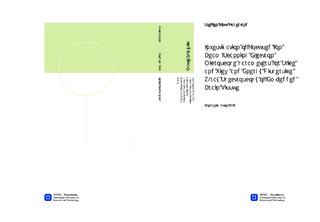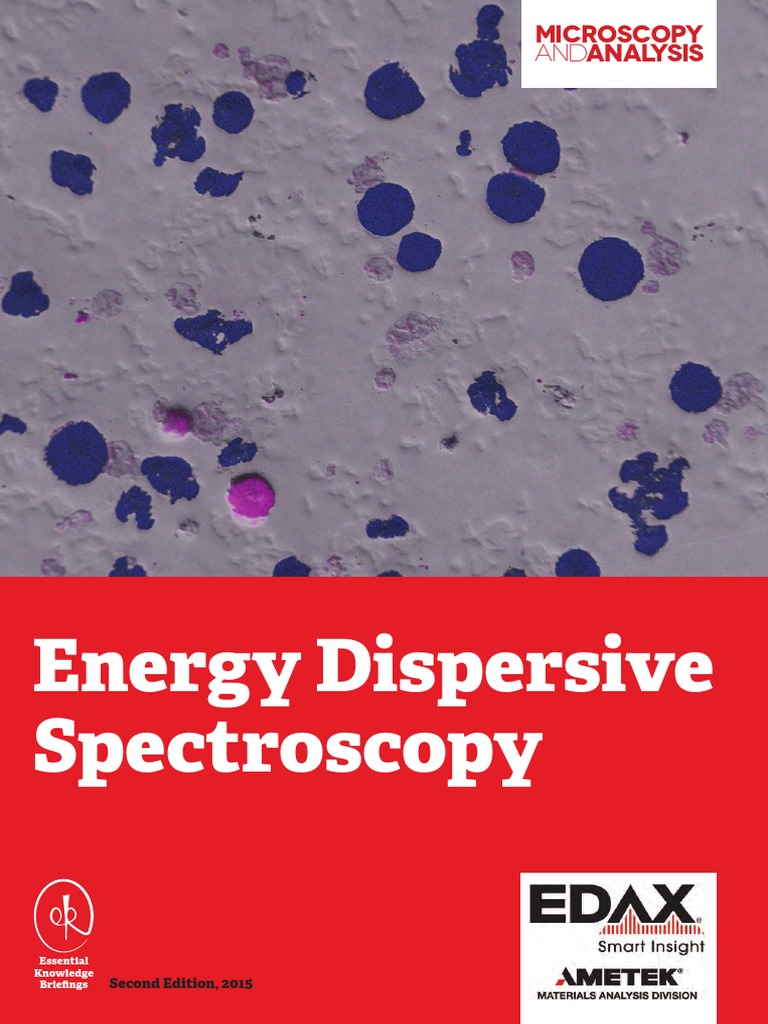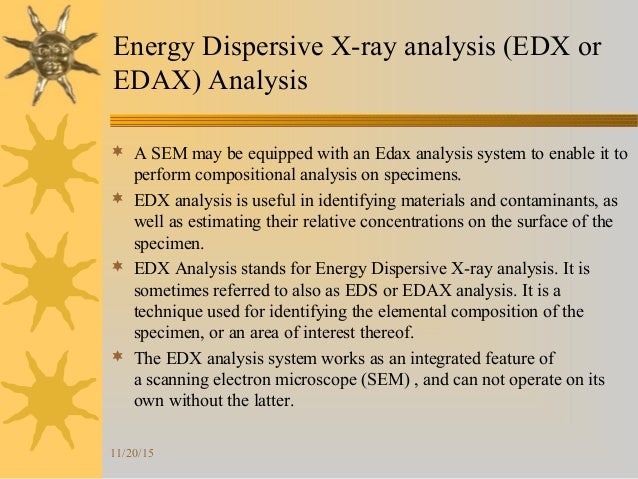- Energy Dispersive Spectroscopy Basics
- Energy Dispersive X Ray Spectroscopy Pdf Free
- X-ray Texture Pack 1.16.1
- Energy Dispersive X Ray
Interaction of an electron beam with a sample target produces a variety of emissions, including x-rays. An energy-dispersive (EDS) detector is used to separate the characteristic x-rays of different elements into an energy spectrum, and EDS system software is used to analyze the energy spectrum in order to determine the abundance of specific elements. EDS can be used to find the chemical composition of materials down to a spot size of a few microns, and to create element composition maps over a much broader raster area. Together, these capabilities provide fundamental compositional information for a wide variety of materials.
Energy Dispersive Spectroscopy Basics
How it Works - EDS
Energy Dispersive X-ray Spectroscopy (EDS or EDX) is a qualitative and quantitative X-ray microanalytical technique that provides information on the chemical composition of a sample for elements with atomic number (Z) 3. . Energy-dispersive X-ray spectroscopy. Non-invasive energy-dispersive X-ray spectroscopy (EDS) is a technique used to analyze the elementary composition of samples dAlf10; Woll97. To study production of an x-ray fluorescence spectrum in a solid sample with primary x-rays, emitted by an anode of the x-ray tube. To study physical processes in a Si-PIN photodiode used as a detector of the x-ray spectrum. To study functioning of a multichannel analyzer of the x-ray spectrum and spectra processing. FTIR Spectroscopy System Energy Dispersive X-ray Fluorescence Spectroscopy EDXIR-Analysis software is specially designed to perform qualitative analysis using data acquired by an energy dispersive X-ray (EDX) fluorescencespectrometer and a Fourier transform infrared spectrophotometer (FTIR). Infrared spectroscopy by william kemp, spectroscopy.
EDS systems are typically integrated into either an SEM or EPMA instrument. EDS systems include a sensitive x-ray detector, a liquid nitrogen dewar for cooling, and software to collect and analyze energy spectra. The detector is mounted in the sample chamber of the main instrument at the end of a long arm, which is itself cooled by liquid nitrogen. The most common detectors are made of Si(Li) crystals that operate at low voltages to improve sensitivity, but recent advances in detector technology make availabale so-called 'silicon drift detectors' that operate at higher count rates without liquid nitrogen cooling.
An EDS detector contains a crystal that absorbs the energy of incoming x-rays by ionization, yielding free electrons in the crystal that become conductive and produce an electrical charge bias. The x-ray absorption thus converts the energy of individual x-rays into electrical voltages of proportional size; the electrical pulses correspond to the characteristic x-rays of the element.
Energy Dispersive X Ray Spectroscopy Pdf Free
Strengths
- When used in 'spot' mode, a user can acquire a full elemental spectrum in only a few seconds. Supporting software makes it possible to readily identify peaks, which makes EDS a great survey tool to quickly identify unknown phases prior to quantitative analysis.
- EDS can be used in semi-quantitative mode to determine chemical composition by peak-height ratio relative to a standard.
Limitations

- There are energy peak overlaps among different elements, particularly those corresponding to x-rays generated by emission from different energy-level shells (K, L and M) in different elements. For example, there are close overlaps of Mn-Kα and Cr-Kβ, or Ti-Kα and various L lines in Ba. Particularly at higher energies, individual peaks may correspond to several different elements; in this case, the user can apply deconvolution methods to try peak separation, or simply consider which elements make 'most sense' given the known context of the sample.
- Because the wavelength-dispersive (WDS) method is more precise and capable of detecting lower elemental abundances, EDS is less commonly used for actual chemical analysis although improvements in detector resolution make EDS a reliable and precise alternative.
- EDS cannot detect the lightest elements, typically below the atomic number of Na for detectors equipped with a Be window. Polymer-based thin windows allow for detection of light elements, depending on the instrument and operating conditions.
Results
A typical EDS spectrum is portrayed as a plot of x-ray counts vs. energy (in keV). Energy peaks correspond to the various elements in the sample. Generally they are narrow and readily resolved, but many elements yield multiple peaks. For example, iron commonly shows strong Kα and Kβ peaks. Elements in low abundance will generate x-ray peaks that may not be resolvable from the background radiation.


References
- Severin, Kenneth P., 2004, Energy Dispersive Spectrometry of Common Rock Forming Minerals. Kluwer Academic Publishers, 225 p.--Highly recommended reference book of representative EDS spectra of the rock-forming minerals, as well as practical tips for spectral acquisition and interpretation.
- Goldstein, J. (2003) Scanning electron microscopy and x-ray microanalysis. Kluwer Adacemic/Plenum Pulbishers, 689 p.
- Reimer, L. (1998) Scanning electron microscopy : physics of image formation and microanalysis. Springer, 527 p.
- Egerton, R. F. (2005) Physical principles of electron microscopy : an introduction to TEM, SEM, and AEM. Springer, 202.
- Clarke, A. R. (2002) Microscopy techniques for materials science. CRC Press (electronic resource)
Related Links


- Petroglyph--An atlas of images using electron microscope, backscattered electron images, element maps, energy dispersive x-ray spectra, and petrographic microscope-- Eric Chrisensen, Brigham Young University
X-ray Texture Pack 1.16.1
Teaching Activities
Energy Dispersive X Ray
- Argast, Anne and Tennis, Clarence F., III, 2004, A web resource for the study of alkali feldspars and perthitic textures using light microscopy, scanning electron microscopy and energy dispersive X-ray spectroscopy, Journal of Geoscience Education 52, no. 3, p. 213-217.